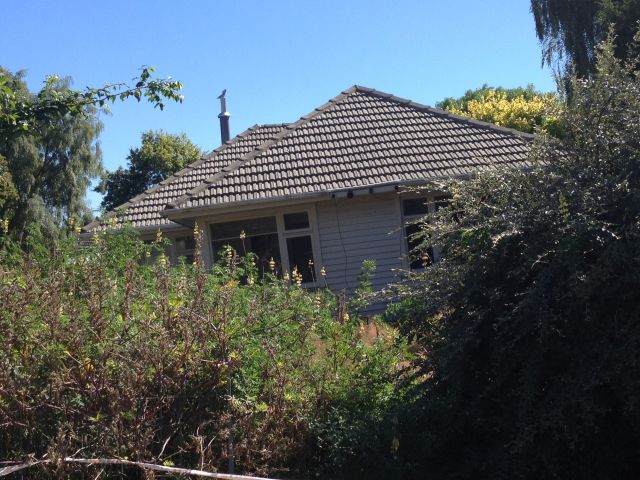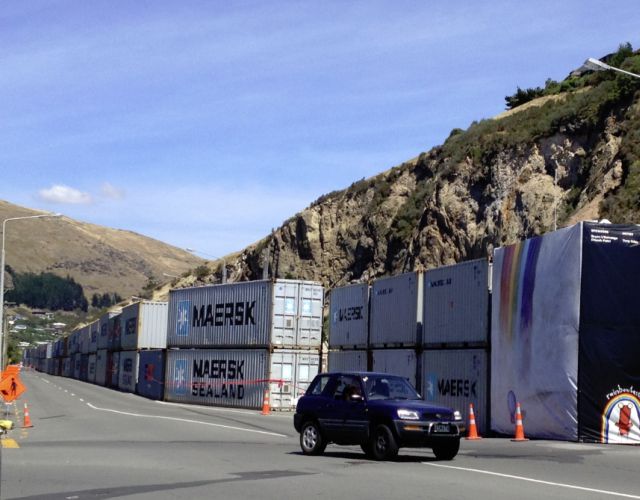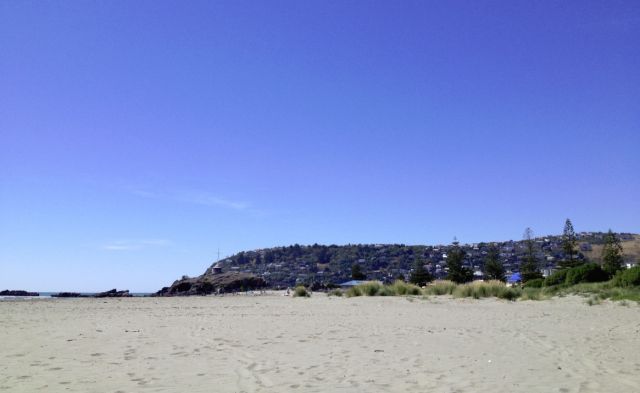A city without a heart – I don’t entirely agree with that description of Christchurch.
Yes we think of the central place where people work, eat and play as being the “heart” of most cities – but disasters show us over and over again that the true heart of any community lies within its people…not its buildings.
As many of you know I was in Christchurch for the first big earthquake – the one that struck at 4:35am on a cold, clear, calm Saturday morning and started this chain of horrific events. The September 4, 2010, quake violently hit my Christchurch hotel – which, seven floors up, looked down over the Cathedral. I was only there for 24 hours but that powerful earthquake – and the strong aftershocks – had a profound effect on my life.
I was lucky to escape Christchurch that day and, unlike locals, I haven’t had to deal with the relentless aftershocks – many short and forgettable – but a handful traumatic and utterly life changing.
Since September 4th 2010 I have visited Christchurch several times, drawn back by my sudden connection with the city and the amazement of seeing it change shape.
On the numerous flights in and out of Christchurch the only thing that ever showed even a hint of the quakes were the blue tarpaulins over the collapsed chimneys of houses. Other than that, Christchurch showed no dramatic signs until you drove to the centre and out east.
But on my latest trip this past weekend – to see how the city is doing 12 months since the deadly Feb 22 quake – I was surprised at what I was seeing…or rather, not seeing…as I flew in to land.
Christchurch was never a towering city of high rise buildings – but now as you fly in it looks more like a large sprawling town. Less than a handful of tall buildings stand out when you fly past. The city has become suburbia everywhere.
Driving in from the airport the poor quality of the roads starts to hit you. The once immaculate city now shows signs of being distracted by something more important. Small traffic islands that would’ve once hosted scores of flowers are in many cases dried up with weeds. Properties that once looked as though they should be on the cover of House & Garden now have tall grass, broken windows and nailed up doors. And the roads resemble 4WD tracks in places. 50km/h zones where doing 50km/h would remove the bottom of your car. So the traffic bounces and bumps along at 20km/h.
It might sound horrible – but the odd thing is, the city for the most part still looks beautiful. Only Christchurch could pull this off.
In the eastern suburbs I can see why so many locals are frustrated – but also why it’s such a daunting task for the government. Some streets look perfectly normal. House after house with beautiful gardens, mown lawns…then you see a house that looks normal, but has been condemned. Who knows why as it seems perfectly fine. The next house over makes it very clear why. This house, on a flat street on flat land, has one side that has dropped about 1.5 metres down. The windows have all popped, the walls have come out. The “lawn” is a metre tall. Another few houses down and your back to normal again.
It is clear there is no simple solution. Balancing the needs for those who want to get out and rebuild versus those who love their home and want to stay. You can’t just blanket entire suburbs as red zones. It really does come down to many factors. Terribly frustrating.
I visited Sumner for the first time in just over a year. I did actually visit the sunny beachside suburb two months after the September earthquake as part of a radio station Christmas party. We played lawn balls near Redcliffs.
This time the cliffs looked even redder – following the violent earthquakes which have removed the face of these cliffs and revealed the red rock behind.
Last Saturday was one of the better summer days this year according to my Christchurch friends. It was hot and sunny…and Sumner was half empty. The road to Sumner is lined with towering ship containers, to stop any further potential rockfalls from hitting motorists. It’s unusual to look at – but not daunting and scary. I felt safe.
To the left the sea was blue and sparkling… it was New Zealand looking its best.
The tunnel through to Lyttelton, however, was a little off putting. Of course, it’s actually one of the safer places to be in some respects – you can’t get hit by a falling rock or falling building. But it’s a little unsettling too – at least for this claustrophobic North Islander. I was glad to see the sun on the south side as we surfaced.
Lyttelton was also unusually quiet. Many of the historic buildings have gone. Lyttelton, which has always been a small community, felt empty. I commented to my friends that it felt like a Sunday morning not a Saturday afternoon. It was very quiet.
But amongst the many now empty sections businesses were open and trading – and people were trickling through. People sat and had loud laughs in the sun with their mates, drinking back ice cold beer from an oddly upmarket shipping container that has been converted into a pub. It’s worth a visit if you’re over there.
Christchurch is a city going through incredible transformation.
The city we remember has gone – there is no doubt about that from locals and from my own feelings.
But there is something new and exciting that is slowly growing. A bit like a newly planted garden – looks a bit messy at first, but give it 5 to 10 years and it could grow into a garden of Eden.
Whether it’s Cashell Mall’s new shipping container mall – vibrant, suave and full of happy shoppers, or the slow demolition of broken buildings – the city is slowly changing, slowly mending.
In 10 or even 5 years time, how many cities in New Zealand will be brand new? Christchurch will be. A new city with a strong local community and a heart that continues to beat strongly today – even if it is perhaps a little out of rhythm at the moment.
Tomorrow – February 22 – is a day for all New Zealanders to again come together and remember those who are no longer with us, remember those who still are but have had their lives torn apart – and to look ahead to the future. A bright future that won’t be able to bring back the old Christchurch – but one that will allow its memory to forever live on as a new Christchurch starts to spring up.
Christchurch in photos – a city of contrast
– Blog by head weather analyst Philip Duncan










Add new comment
Leighton on 21/02/2012 6:45am
Nice stuff Phil. Tonight as I drove around my area, almost every road cone about has had top quality flower arrangements put into the whole on top. 🙂 Its really nice to see!
Reply